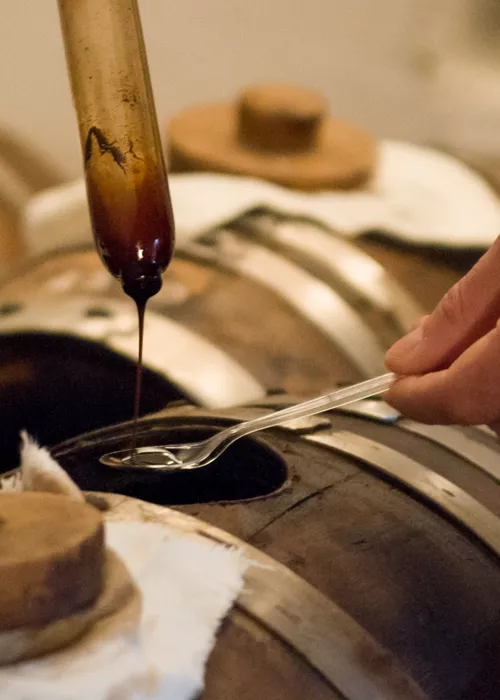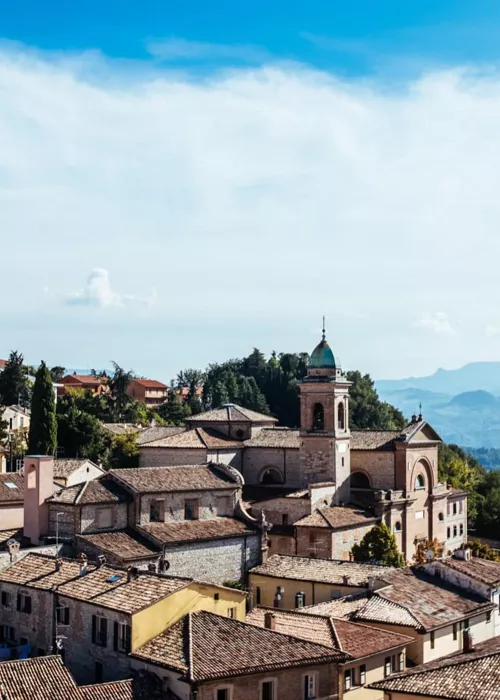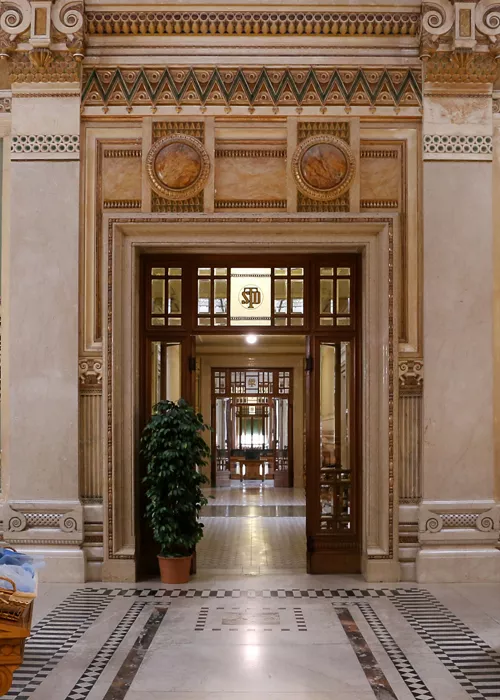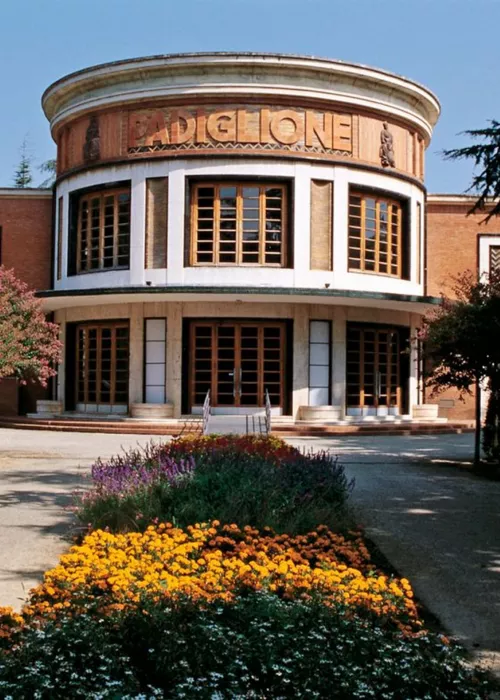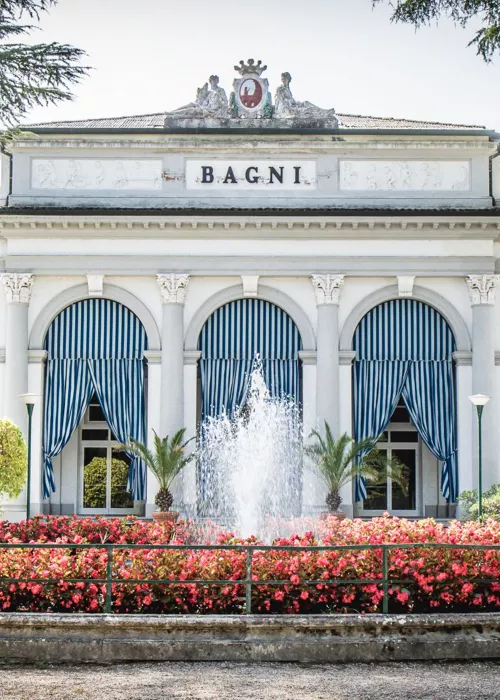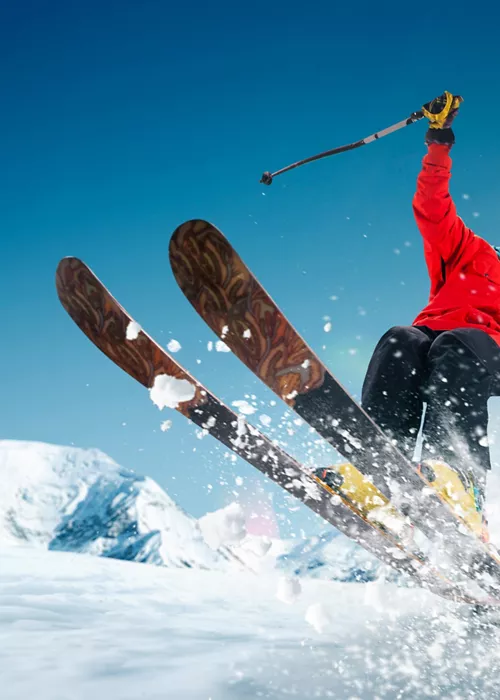3 villages in Romagna perfect for a relaxing holiday
9 minutes

Through the valleys of Romagna, the southern part of the Emilia-Romagna region, there are three unmissable villages. Santarcangelo di Romagna, Bagno di Romagna and Brisighella will keep you busy for a week or even longer - Brisighella is worth visiting for its olive oil, wine and for the beauty of the village, and Bagno di Romagna is well known for the healing waters, hiking and walking paths, which can be enjoyed year round.
Santarcangelo is the ideal base to explore this part of Romagna. The village is just a few dozen kilometers from the Adriatic coast, perfect if you want to enjoy some beach time. Life in the village goes by slowly, between a walk to the clock tower and checking out scenic points with views over San Marino and Mount Titano. Santarcangelo has a rich cultural history and it’s well known for Sangiovese, the local wine that you can taste visiting the local “trattorie”.
Santarcangelo di Romagna
Top 5 things not to miss
- Piazza Ganganelli and the Arco dei Becchi
- Stamperia Marchi and the oldest ‘mangano’ in the world
- Walking up to the romantic viewpoints
- Roaming underground in the Grottos of Santarcangelo
- FOOD/WINE - Sangiovese and traditional specialties at La Sangiovesa Restaurant

What to do in Santarcangelo di Romagna
Santarcangelo was a blast for us. We couldn’t expect our stay in the village to be so incredible. The town is lovely, and the locals are so welcoming. As a result, the village was honoured with the prestigious “slow village” award, because of its slow and welcoming lifestyle.
There’s plenty to see and do in Santarcangelo to keep you busy for a few days. At the entrance of the village, you will be welcomed by a triumphal arch in honour of Pope Clemente XIV, situated in Piazza Ganganelli.
In the square, you’ll also find two more cool sights - a beautiful fountain with a pine cone, with water gushing from the top, and the clock tower, with wonderful views over the surrounding hills. The clock tower was very important for local people when watches were not yet used, as workers relied on it to check the time of the day and their working hours. It’s one of the best known sights in Santarcangelo, and nowadays, it still allows people to recognize the village from miles away.
We recommend walking around the village in the morning, through the market held from 8 am to 1 pm daily in Piazza Ganganelli. Locals love to hang out at the central bar before or after their shopping.
Just around the corner, you’ll notice that the streets of Santarcangelo become narrow, taking you to the most picturesque part of the village. Walk along Via Cesare Battisti until you find Stamperia Marchi, housing the oldest ‘mangano’ in the world, a wooden wheel used to print fabric, dating back to 1663, and still working well.
Behind the corner of Stamperia Marchi is “La Sangiovesa” Restaurant, one of the most famous eateries in town. Dining at La Sangiovesa is like walking through a museum about the history of Santarcangelo, paying homage to illustrious people who made the village popular.
Book your dinner in advance, as the restaurant is very busy. Make sure to ask to visit the grottos and passages underneath. The staff is very welcoming, and someone will be glad to show you the tuff caves where cheese and wine used to be kept.
Santarcangelo is built above caves that helped locals to escape from Nazi roundups during WWII. Many houses used to have their private caves, accessible through hatches on the floor. You can arrange a visit to the caves at the local tourist office (IAT) in Via Cesare Battisti, just next to the “Stamperia Marchi”. Walking beneath the village is very exciting, and allows you to understand how life in the past shaped the character of the village.
Sant’Arcangelo di Romagna: Useful Information
Best time to visit: Santarcangelo is lively all year. Spring is a great time to visit for events like “Balconi Fioriti” (balconies in bloom), when residents, shops, and businesses compete for the best flower display. Summer in Santarcangelo is hot, but the seaside is just a short distance away. Autumn and Winter are also worth considering - the village is peaceful and you can get good deals on accommodation.
How to get to Santarcangelo: Rimini is the largest city near Santarcangelo. Driving takes 20 minutes along the SS16. There’s also a station in Santarcangelo - trains from Rimini depart every 40 minutes and travel time is 20 minutes.
Bagno di Romagna

Top 5 things not to miss
- Relax in the Thermal Baths
- Walking through the “Sentiero degli gnomi” (Path of Gnomes)
- The 1000-year church of Santa Maria Assunta
- Exploring Passo di Montecarpano to Pietrapazza
- FOOD/WINE - deep-fried porcini mushrooms at Lago Pontini
What to do in Bagno di Romagna
During our journey across Emilia-Romagna, we also spent time in Bagno di Romagna, close to the Tuscan border. Getting there is not for the faint hearted, as the road through the mountains is long and winding - but once you reach the pass summit at 1173 meters above sea level, you’re almost there!
Bagno - as locals call it - is a thermal town, well known since Roman times. The Terme di Sant’Agnese are right in the center of the village - you can see the ancient spring and bathe in these healing waters, which are said to be especially good for skin ailments.
Bagno di Romagna is a wonderful place where you can easily get lost and relax more than you should. Staying at a thermal hotel is a must, but also don’t forget to taste local food. If you’re there in Autumn, make sure you order deep-fried porcini mushrooms. It was a real surprise for us!
A good place to visit is Lago Pontini, below Monte Testaccio - you can enjoy a great view, in Winter as well as Summer. Ristorante Caminetto La Nella is a good place to stop for lunch after a walk in nature, and they make great porcini.
Bagno di Romagna is also a great hiking destination. There’s an itinerary for the whole family that starts right into the center of town - the “Sentiero degli Gnomi”, (Gnomes Path), winding through the forest and along the riverside.
Expert hikers can also attempt the trail taking you to the cross on top of the mountain, but the path is steep and not ideal in winter or for beginners. If you want an easy walk, we recommend heading to Prato Grilli, then along dusty mountain roads for about 8 km to Pietrapazza, and continue walking through Passo di Montecarpano, marking the border with Tuscany. You can also opt to get there by e-bike, easily available for rent in Bagno di Romagna.

Bagno di Romagna: Useful Information
Best time to visit: Thanks to its thermal baths, Bagno di Romagna is lively all year round. Summer is busy, but it’s the perfect time for outdoor activities; Winter is also a good time to visit to enjoy the festive atmosphere, with lights and decorations, and activities move indoors. Plan your trip from April to October for good weather and warm temperatures - afterwards the weather turns chilly and rainy.
How to get there: Bagno di Romagna is 90 km southeast of Bologna, in the Tuscany-Romagna Apennines, and driving time is about 2 hours. The closest major town is Cesena, just 50 km away. To get there by public transport, take Sulga Autolinee bus 138 to Rome Airport, taking you to Bagno in about 1 hour.
Brisighella

Top 5 things not to miss
- Walking along Via degli Asini
- Going olive oil tasting
- Climbing up to Torre dell’Orologio and Rocca Manfrediana
- Hiking Parco del Carnè
- FOOD/WINE - traditional dinner at Ristorante la Grotta

What to do in Brisighella
Brisighella is a quiet and slow-paced town, with friendly locals and stunning architecture - making it the most exciting village in the Ravenna province. The town was built on a steep hill - at the top you’ll notice the clock tower and the Rocca Manfrediana fortress facing each other, guarding the valley.
Brisighella is a place where you take life slowly, and embrace a lifestyle made of good food, smiles, and long walks in a pristine environment. The village is surrounded by olive groves. Learning about olive oil production at the Brisighella Dop Consortium is a must-do activity here, and naturally you’ll get to taste this special olive oil at the end! Brisighella olive oil is produced in small quantities, so it’s a real privilege to be able to try it.
A good place to start your visit to Brisighella is Piazza Marconi, the center of the old village. You will see beautiful colourful buildings with an outdoor seating area right by the entrance, perfect to enjoy the nice weather and watch locals passing by.
Look up, and you’ll see the half-moon windows of Via degli Asini (‘Donkey Street’), a unique elevated medieval street like no other in Europe. The street is on the first floor of the buildings in Piazza Marconi. It was built in the fourteenth century to transport goods through the village and house stables for donkeys; that’s where its name came from.
Hiking the steep stairs from Via degli Asini, you can reach the “Torre dell’Orologio” (clock tower). Dating back to 1290, it was used as a watch tower and then reconstructed in late 1850, becoming the clock tower we can admire today. You’ll notice the clock only has six numbers - every day, the hands do four rounds.
On the opposite side, facing each other, you’ll see the Rocca Manfrediana, a fortress dating back to the 14th Century, overlooking and protecting the valley. The top of Rocca Manfrediana is a great place to admire the landscape, with vineyards and olive trees. The entrance to the Rocca costs only €3 and includes access to the Museo Ugonia in Piazza Marconi.
Another unique place to visit in Brisighella is the “La Grotta” restaurant, close to the main square. This Michelin-star restaurant was completely carved into the gypsum rock, and offers a creative menu that combines traditional Romagna specialties with ingredients from further away.
Visiting villages in Emilia-Romagna you’ll eat plenty of delicious food, so you might want to burn some calories on a hike. A great option is heading to Parco del Carnè, about 10 minutes drive from the village. You’ll find many trails of various difficulty levels. The easy path will take you directly to the Rifugio (mountain hut), with a restaurant and picnic spot surrounded by unspoiled nature. At the end of summer, locals say that you can hear and spot red deer.
Brisighella: Useful Information
Best time to visit: Brisighella is perfect all year round for a day trip from Ravenna or for a few days of relaxation. Spring and Summer are perfect for outdoor activities, and Autumn is perfect to join locals in truffle hunting, mushroom picking, and photographing the charming landscape. In Winter you’ll mainly spend time in Brisighella indoors, enjoying the local cuisine and wine.
How to get there: Brisighella is easy to reach by car from Ravenna, 50 km away, and driving time is around 50 minutes. You can also reach Brisighella by public transport in about 1 hour, changing trains in Faenza. It’s the cheapest way to get there, as tickets are only €5.
Article written about the experience of Toti Maisto and Alessia Vurchio - italiantripabroad.com


